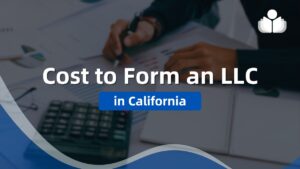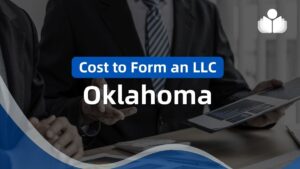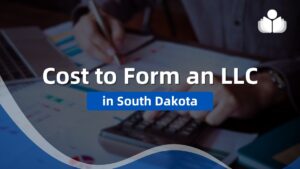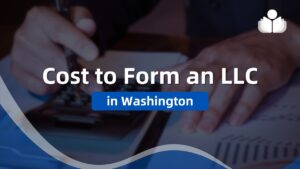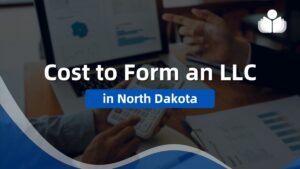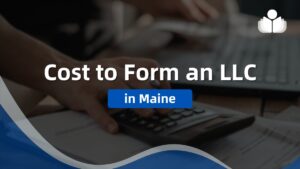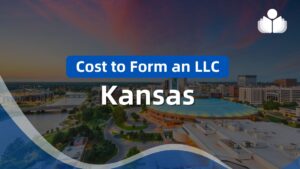Free Micro-eMBA Module #8: Managing Your Organization’s Finances
© Copyright Carter McNamara, MBA, PhD, Authenticity Consulting,
LLC. Adapted from the Field Guide to Leadership and Supervision in Business
and Field Guide to Leadership and Supervision for Nonprofit Staff.
This module is in the organization development program. However,
this module can also be used by anyone as a self-study exercise
to learn more about managing finances.
Sections of This Module Include the Following
Introduction
Outcomes
Materials for Review
Suggested Topics for Reflection and Discussion
Activities to Build Systems and Practices
Assessments
Tracking Open Action Items
INTRODUCTION
New business leaders and managers have to develop at least
basic skills in financial management. Expecting others in the
organization to manage finances is clearly asking for trouble.
Basic skills in financial management start in the critical areas
of cash management and bookkeeping, which should be done according
to certain financial controls to ensure integrity in the bookkeeping
process. New leaders and managers should soon go on to learn how
to generate financial statements (from bookkeeping journals) and
analyze those statements to really understand the financial condition
of the business. Financial analysis shows the “reality”
of the situation of a business — seen as such, financial management
is one of the most important practices in management. This module
will help you understand basic practices in financial management,
and build the basic systems and practices needed in a healthy
business.
In the case of a corporation, the board has final responsibility
for the overall financial health of the organization. Therefore,
it’s critical that new corporations quickly build up the roles
of the board treasurer and board finance committee. The treasurer
and finance committee can be wonderful assets to the chief executive
when managing the finances of the organization — however, the
chief executive should never completely ignore the finances by
leaving them for the treasurer and other board members to manage.
The board’s role in ongoing governance of finances can include
ongoing review of financial reports during board meetings, approving
yearly budgets and financial statements, approving a set of fiscal
policies (guidelines for managing finances), reviewing results
of a yearly audit conducted by an outside auditor, co-signing
checks that are over certain limits and approving contracts, and
ensuring the organization conforms to relevant rules and regulations.
NOTE ABOUT LEARNING FINANCIAL MANAGEMENT: At first, when learning
financial management, many people might react that the learning
experience seems mostly like filling one’s head with strange concepts
and processes. Typically, the learning process starts with this
experience — it probably isn’t until the learner actually enters
an accounting transaction and analyzes a financial statement that
learning about financial management seems more “real”.
But the learning process almost always starts by reviewing concepts
and processes. Financial management almost always tells the truth
about the situation of a business — so the learning process is
well worth the effort.
NOTE ABOUT BOARD COMMITTEES: Consider establishing a Board
Finance Committee to review and
help guide implementation the information in this learning module.
Major activities and goals from this learning module could be
incorporated in that Committee’s Committee Work Plan.
Also consider
Related Library Topics
OUTCOMES
Learners who complete this module will achieve the following
outcomes:
- Learn Basics of Bookkeeping and Finances
- Understand Budgeting and Deviation Analysis
- Understand Basic Cash Management Practices
- Recognize Major Financial Statements
- Know Basics of Financial Analysis
- Evaluate Your Financial Management Practices
MATERIALS FOR REVIEW
- The following materials will help you address each of
the topics and learning activities in this module. - Note that additional materials for review are associated
next to certain topics and activities listed in this module.
Background Reading
Quickly get a “big picture” view of the aspects of
financial management by scanning the types of topics and their
order at
All
About Financial Management in For-Profits
Basics and Getting Started
Basics
of Financial Management
– – – Role
of Treasurer (read link “Role of Treasurer”)
– – – Charter
and Work Plan for Board Finance Committee
– – – Getting
an Accountant or Bookkeeper if Needed (read “Getting and
Using Accounting Services”)
– – – Buy
Accounting Software to Help You? (scan each of the articles at
the links)
– – – Getting
a Bank and Banker (read “Getting and Using a Banker”)
– – – Basic
Overview of For-Profit Financial Management
– – – – – – Basics
of Financial Management in U.S. Small For-Profit Businesses
– – – – – – Free
Introductory Accounting & Bookkeeping Tutorial
(scan the topics in the tutorial)
Activities in the Yearly Accounting Cycle
Bookkeeping Basics:
Bookkeeping
Basics, including:
– – – Beginners’ Guide to Financial Statements
– – – Bookkeeping and Accounting Tutorial
(more detailed tutorial … be patient)
Financial
Controls
– – – Internal
Controls for a Small Business (scan the controls to get a sense
for them)
– – – Sample
Financial Procedures Manual
Critical Operating Activities in Financial Management:
Managing
a Budget (read all)
– – – The Right Way to Prepare a Budget?
– – – Small
Business Budget Example
Credit
and Collections (read at least 3 articles)
– – – Collection Letter Secrets to Getting Paid
Budget
Deviation Analysis (read all)
Financial Statements and Analysis:
Financial
Statements (read 2 of the articles)
– – – Profit
and Loss (Income) Statement (read all)
– – – Balance
Sheets (read all)
Financial
Analysis
– – – Profit
Analysis (read 2 of the articles)
– – – Break-Even
Analysis (read 2 of the articles)
– – – Ratios
(read 2 of the articles)
SUGGESTED TOPICS FOR REFLECTION
AND DISCUSSION
- Learners are strongly encouraged to discuss the following
questions with peers, board members, management and staff, as
appropriate.
Preparation for Financial Management
1. What is the role of the board treasurer? See Role of Treasurer.
2. What are at least 3 goals of a Board Finance Committee?
See Charter and Work Plan for Board Finance Committee.
3. What needs to be considered when selecting an accountant?
See Getting an Accountant or Bookkeeper if Needed.
4. What needs to be considered when buying accounting software?
See Buy Accounting Software to Help You?
5. What needs to be considered when selecting a banker? What
services might a business need from a bank? See Getting a Bank and Banker.
6. What is the board’s role in financial management? See Basics of Financial Management in U.S. Small
For-Profit Businesses.
Basics of Accounting
1. What is the accounting cycle? See Basics of Financial Management in U.S. Small
For-Profit Businesses.
2. What are the elements of an accounting system? See Basics of Financial Management in U.S. Small
For-Profit Businesses.
3. What is a fiscal policies and procedures manual? See Basics of Financial Management in U.S. Small
For-Profit Businesses.
Bookkeeping and Financial Controls
1. What general activities are included in bookkeeping? See
Basics of Financial Management in U.S. Small
For-Profit Businesses.
2. What types of information are in a financial fiscal policies
and procedures manual? See Sample Financial Procedures Manual.
3. What is cash-basis vs. accrual-basis accounting? See Basics of Financial Management in U.S. Small
For-Profit Businesses.
4. What bookkeeping journals might you start out with? See
Basics of Financial Management in U.S. Small
For-Profit Businesses.
5. What is a Chart of Accounts? See Basics of Financial Management in U.S. Small
For-Profit Businesses.
6. What is the purpose of financial internal controls? What
are some practices in internal controls (HINT: think about signing
checks, opening mail, how to verify that account totals are accurate,
etc.)? NOTE: The concepts in financial controls are essentially
the same between a for-profit and nonprofit organization. See
Internal Controls for a Small Business — scan
the controls to get a sense for them.
Budget, Cash Management, Credit and Collections, and Budget
Deviation Analysis
1. What is a yearly (or operating or annual) budget? How is
a yearly budget prepared? See Basics of Financial Management in U.S. Small
For-Profit Businesses,
The Right Way to Prepare a BudgetHow Do We Prepare a Budget?
2. What are fixed expenses and variable expenses? See The Right Way to Prepare a Budget and
Fixed and Variable Expenses?
3. What is petty cash? How should it be handled? (The concept
is essentially the same in nonprofits and for-profits.) See Internal Controls for Petty Cash and Receipts.
4. What is a cash flow and how should cash be managed? See
Managing Cash Flow.
5. What is a cash flow statement? What is a cash flow projection?
See Managing Cash Flow.
6. What is a budget deviation analysis? What information is
considered during this analysis? See Budget Deviation Analysis.
Financial Statements and Analysis
1. What are two major forms of financial statements used by
for-profit organizations? See Financial Statements.
2. What general information is included a Profit and Loss Statement?
Balance Sheet? See Financial Statements.
3. What can be detected from a profit and loss statement? See
Profit and Loss Statement.
4. What can be detected from a balance sheet? See Balance Sheet.
5. What is the purpose of profit analysis? Break-even analysis?
Ratio analysis? See Profit Analysis, Break-Even Analysis and Ratio Analysis.
ACTIVITIES TO BUILD SYSTEMS AND
PRACTICES
- Learners are strongly encouraged to complete the following
activities, and share and discuss results with peers, board members,
management and employees, as appropriate. - As you proceed through the following activities, be sure
to note any incomplete actions in the Action Item Planning List.
Building Role of Treasurer and Board Finance Committee
1. In the case of corporations, one of the greatest assets
to a chief executive can be the board treasurer and finance committee.
Do you have a board treasurer and a finance committee? If not,
make it a high priority to recruit a treasurer and organize a
board finance committee. See Charter and Work Plan for Board Finance Committee.
Designing Operating (or Annual or Yearly) Budget
1. Your operating budget depicts the revenue the organization
expects to earn. It also depicts how that revenue will be spent.
Budget development starts from strategic planning. If you completed
Module 6: Developing Your Strategic Plan.
then you already have designed a basic yearly operating budget.
If you completed Module 7: Marketing Your Products, then you’ve
updated your operating budget to include revenue and costs of
your products and services. If you have not completed these two
modules, you should review information and materials in those
modules to draft and update a basic operating budget.
2. Obtain authorization of the operating budget by the board
(in the case of corporations). Board members should receive copies
of the operating budget for their review and authorization in
a board meeting. The minutes of the board meeting should reflect
member’s approval of the budget. Approval indicates that the board
expects the organization to operate over the coming year according
to the expected expenses and revenues depicted in the approved
operating budget. Note that if board members have been involved
in previous strategic and product/program planning, then their
approval of the budgets should be very straightforward at this
point.
Building Basics of Bookkeeping and Financial Controls
1. For your business, do you use a cash-basis vs. accrual-basis
accounting system? How do you know? What system should you be
using? What about for generating financial reports? See Basics of Financial Management in U.S. Small
For-Profit Businesses.
2. Will you be using a software tool to do your bookkeeping
and accounting? See Buy Accounting Software to Help You?
3. What bookkeeping journals do you use for your business?
If you do not have journals, then start with a simple cash journal.
See Basics of Financial Management in U.S. Small
For-Profit Businesses.
4. Do you have a Chart of Accounts for your business? If you do not have one,
then consider an example provided in the following links. If you have selected
a software tool to help you manage your finances, then that tool might already
have a Chart of Accounts in it. See Chart of Accounts.
5. What financial controls do you have in place? If you have
not yet done so, draft a set of financial controls for your organization.
Think about controls to guide signing checks, handling petty cash,
opening mail, how to verify that account totals are accurate,
etc.) (The concepts in financial controls are essentially the
same between a for-profit and nonprofit organization.) See Sample Financial Procedures Manual.
Credit and Collections
1. Imagine that you did not get paid by a client or customer.
What would you do? Write down your answer and consider it to be
a basic draft of a financial procedure to handle collections.
See Credit and Collections and
Collection Letter Secrets to
Getting Paid.
Budget Deviation Analysis
1. A few months after implementing your operating budget (that
includes expected expenses and revenues), modify the budget report
to include the column headings listed in your reading in the section
Budget Deviation Analysis. Analyze how closely
actual expenses and revenues are matching planned expenses and
revenues. What is the percentage difference for each item or account
or line item in the report? Is that percentage difference a problem?
What caused the difference? What are you going to do about the
differences in the future? Conduct a budget deviation analysis
each month in your business.
Financial Statements — Profit and Loss (Income Statement)
1. Generate an Income Statement for your business. Generating
an income statement requires that you have been entering business
financial transactions either by hand in a journal(s) or in an
accounting software package. Ideally, you have an accounting software
package that will produce a statement for you merely by entering
a command or clicking on the button on your computer screen. If
you generate a statement by hand, see examples in Profit and Loss (Income) Statements to provide
direction. Do you have an operating profit or loss?
Financial Statements — Balance Sheet
1. Generate a balance sheet for your business. Similar to an
income statement, generating a balance sheet requires that you
have been entering business financial transactions either by hand
in a journal(s) or in an accounting software package. Ideally,
you have an accounting software package that will produce a sheet
for you merely by entering a command or clicking on the button
on your computer screen. If you generate a sheet by hand, see
examples in Balance Sheets to provide direction. Do you
have a positive or negative net worth? Calculate your current
ratio. See Ratios. What does your current ratio indicate
about your organization? Calculate your quick ratio. See Ratios. What does your quick ratio tell
your about your organization?
Financial Statements — Cash Flow
1. Generate a cash flow statement for your business. A cash
flow statement can be one of the most important statements for
a new business because it can depict whether you can pay your
near-term bills or not. Generating a balance sheet requires that
you have been entering business financial transactions either
by hand in a journal(s) or in an accounting software package.
Ideally, you have an accounting software package that will produce
a sheet for you merely by entering a command or clicking on the
button on your computer screen. See Managing Cash Flow.
ASSESSMENTS
1. Evaluation
of Financial Practices in Businesses
REMINDERS FOR THOSE IN THE ON-LINE DEVELOPMENT PROGRAM
Reminders About You
1. Are you using your skills learned in previous modules? For
example, as you using methodical approaches to problem solving
and decision making? Are you using strong practices of meeting
management? Are you communicating key information to others throughout
your organization?
2. Are you discussing topics and materials with peers, board
members and others, as appropriate? Discussion and ongoing feedback
are some of the best methods to really learn new information and
materials.
3. Are you helping others to hold you accountable to your times
that you committed to reading and study in this program?
4. Are you reflecting on learnings from past modules and how they build on the learning
in this module? For example, are you seeing your organization from a systems view,
as explained in the module “Starting and Understanding Your Organization?”
TRACKING OPEN ACTION ITEMS
1. One of the first indicators that an organization or a person
is struggling is that open action items are not tracked and reviewed.
(Open action items are required actions that have not yet been
completed.) Instead, people only see and react to the latest “fires”
in their workplaces or their lives. Whether open action items
are critical to address now or not, they should not entirely be
forgotten. Therefore, update and regularly review a list of open
action items (identified while proceeding through this program)
that includes listing each open action item, who is responsible
to complete it, when it should be completed and any associated
comments. When updating the list, consider action items as identified
during discussions, learning activities and assessments in this
module. Share and regularly review this action item list with
the appropriate peers, board, management and employees in your
organization. You can use the following Action Item Planning List. (At that Web address,
a box might open, asking you which software application to open
the document.)
2. If you have questions, consider posing them in the national,
free, online discussion group hr.com, which is attended
by many human resource and organization development experts.
(Learners in the organization development program can return
to the home page of the organization development program.)
For the Category of Financial Management (For-Profit):
To round out your knowledge of this Library topic, you may
want to review some related topics, available from the link below.
Each of the related topics includes free, online resources.
Also, scan the Recommended Books listed below. They have been
selected for their relevance and highly practical nature.
 Sections of this topic
Sections of this topic


